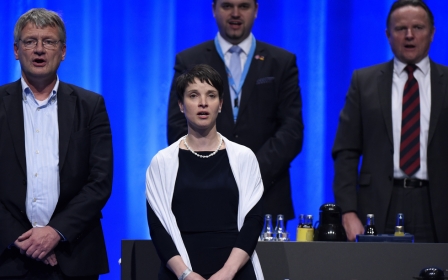Passersby cheer during attack on young asylum seekers in Germany

Passersby cheered and shouted xenophobic slogans during a physical assault targeting asylum seekers in eastern Germany, police said on Tuesday.
Four asylum seekers from Syria, Egypt and Somalia were attacked on Monday night at a tram station in Frankfurt an der Oder, a town of some 60,000 people that sits on the border with Poland.
During the attack one of the asylum seekers, a 17-year-old, was punched in the face, a German police spokesperson said on Tuesday.
The attack began at a tram station, but when the victims ran away the attackers gave chase to a local supermarket and continued to insult the group, German daily Der Spiegel reported.
A police spokesperson said that a crowd of passersby watched the attack, cheering and shouting xenophobic slogans.
However, police arrived after the attack was reported by other onlookers.
One of the alleged attackers remains in custody, charged with grevious bodily harm and “using symbols of unconstitutional organisations”.
Police said on Tuesday that the alleged attacker was subjected to a breathaliser test on arrest, and was found to have a blood alcohol level of 3.7 per thousand, or just under 100 times the legal driving limit in Germany.
Some residents of Frankfurt an der Oder are known to harbour anti-immigrant sentiments, and the town was the setting of a 2004 documentary about the neo-Nazi movement.
Anti-immigrant rhetoric has been on the rise in Germany as a whole since the government, led by Chancellor Angela Merkel, announced a relatively open-door policy towards the millions of people who have sought asylum in Europe since 2014.
As a result, just over a million people sought asylum in Germany in 2015 alone.
Anti-immigrant political parties have capitalised on concerns about the latest influx of people to grow their support base.
The far-right Alternative for Germany (AfD) party – which will contest the 2017 federal elections on a manifesto pledge to ban minarets and the Islamic veil – is currently polling at over 14 percent.
Middle East Eye propose une couverture et une analyse indépendantes et incomparables du Moyen-Orient, de l’Afrique du Nord et d’autres régions du monde. Pour en savoir plus sur la reprise de ce contenu et les frais qui s’appliquent, veuillez remplir ce formulaire [en anglais]. Pour en savoir plus sur MEE, cliquez ici [en anglais].




